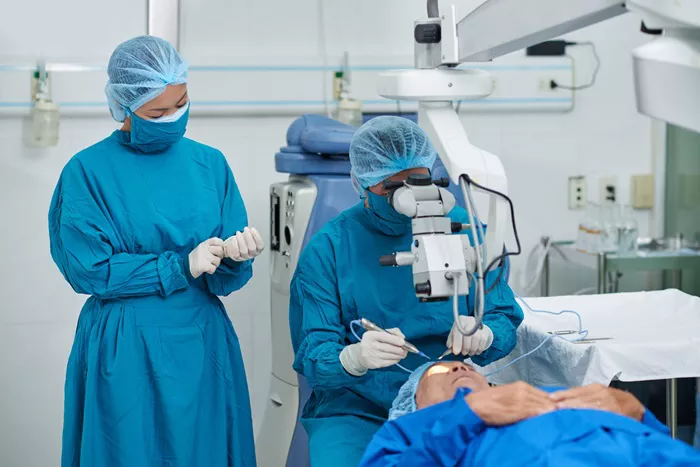A comprehensive study on cataract surgery outcomes in Australia has raised concerns about the increasing complexity of cases in public hospitals, particularly those serving lower-socioeconomic communities. Researchers have urged policymakers and hospital administrators to consider these trends when developing future healthcare funding and service provision strategies.
The study, which reviewed 5,018 consecutive phacoemulsification cataract surgeries at Sydney’s Westmead Hospital between May 2017 and August 2020, revealed that nearly half of the patients (48.9%) presented with more complex conditions, often accompanied by multiple co-existing ocular pathologies. This rate is notably higher than that observed in other Western nations, including the UK (36.9%), Sweden (33%), and the United States (35.4%).
The authors of the study, including Dr. Muhammad A Khan, Dr. Brendon W H Lee, Dr. Lauren Sartor, and Associate Professor Chameen Samarawickrama, emphasized that this trend highlights the varying demographics of cataract surgery patients based on geographical location and socio-economic factors.
“Our institution serves approximately 1.2 million Australians, with a high referral rate from lower socioeconomic areas,” the researchers explained. “Patients from these communities often present with multiple comorbidities, seek care later in the disease process, and exhibit significant ocular pathology at the time of presentation.”
The study also noted a substantial discrepancy in wait times for cataract surgery at Westmead Hospital compared to national averages. The median wait time at Westmead was 330 days, significantly longer than the national average of 98 days as of 2019. This backlog was further exacerbated by the COVID-19 pandemic, which caused delays in elective surgeries.
Data from the study, which examined preoperative, intraoperative, and postoperative outcomes, revealed that 37.3% of surgeries were performed by consultants, 47.1% by trainees, and 15.6% by fellows. Ocular pathology was noted in almost half of the cases, with the mean preoperative and one-month postoperative uncorrected distance visual acuity (UDVA) being 6/48 and 6/12, respectively.
Intraoperative complications occurred in 7.6% of cases, with posterior capsular rupture (PCR) rates at 2.7%. There was no significant difference in PCR rates between consultants, trainees, and fellows. Key risk factors for PCR included advanced cataracts, the use of alpha-antagonists, small pupil size, and the presence of glaucoma.
The researchers found that the visual and surgical outcomes from Westmead Hospital were consistent with those reported in other Australian studies and international teaching hospitals. However, they highlighted the need for a regional cataract surgery registry to better track key performance indicators, emerging trends, and region-specific risk factors. Currently, regional benchmarks can only be established through literature reviews, limiting the ability to assess local outcomes comprehensively.
In conclusion, the study underscores the need for targeted healthcare policies that address the increasing complexity of cataract surgeries, particularly in public hospitals that cater to disadvantaged communities.
Related topic:
OKYO Pharma’s OK-101 Receives USAN Name ‘Urcosimod’
World Sight Day 2025: #LoveYourEyes
Study Highlights Age and Gender Risks in Gene Therapy for Eye Diseases


